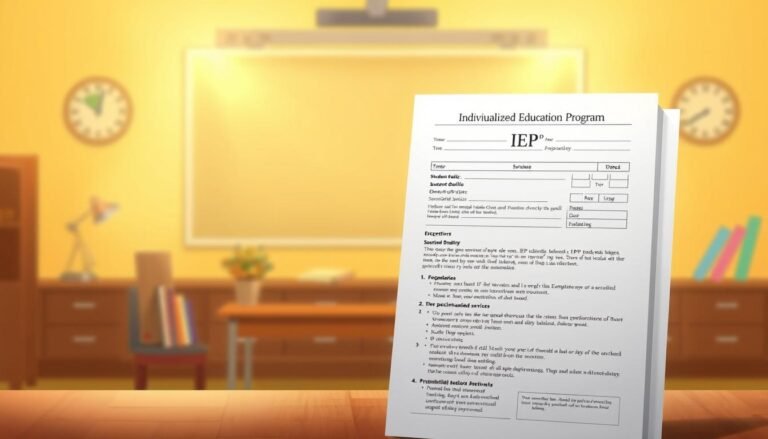
psyforu
Bilingual Brains: The Proven Benefits of Learning Multiple Languages with Learning Disabilities
Introduction
Learning a new language is often painted as a daunting task, especially for those with learning disabilities. However, the exploration of bilingualism has recently uncovered fascinating insights into the “bilingual brain” and the surprising benefits it offers. In this article, we will delve deep into the topic of Bilingual Brains: The Surprising Benefits of Learning Multiple Languages with Learning Disabilities, shedding light on how multilingualism can enrich the cognitive landscape for individuals facing learning challenges.
Learning multiple languages may just be the key to unlocking hidden potentials, creating a more adaptable and resilient mind. As we navigate this extensive topic, you’ll discover that bilingualism isn’t only a means of communication; it is a cognitive workout that boosts brain functionality, improves memory, and enhances problem-solving skills. Let’s embark on this enlightening journey.
Understanding Learning Disabilities
What Are Learning Disabilities?
Learning disabilities encompass a variety of disorders that impact a person’s ability to learn in standard educational settings. They can manifest in difficulties with reading (dyslexia), writing (dysgraphia), and math (dyscalculia). These challenges can lead to frustration and hinder academic performance, but they do not indicate a lack of intelligence.
Key Facts about Learning Disabilities:
| Type of Learning Disability | Description | Prevalence (%) |
|---|---|---|
| Dyslexia | Difficulty with reading comprehension and fluency | 5-10% |
| Dysgraphia | Difficulty in writing and composition | 5-7% |
| Dyscalculia | Difficulty with math concepts and computations | 5-7% |
Understanding these disabilities is crucial, as it lays the groundwork for exploring the remarkable benefits of being bilingual.
The Importance of Early Intervention
Intervening early with supportive education strategies can lead to better outcomes for students with learning disabilities. Dual-language programs and specialized language instruction are becoming increasingly valuable in academic settings, particularly for these learners.
The Bilingual Advantage
Cognitive Enhancements: More Than Just Language
The concept of Bilingual Brains: The Surprising Benefits of Learning Multiple Languages with Learning Disabilities goes beyond mere language acquisition. Bilingualism has been linked to several cognitive benefits, including enhanced problem-solving skills, better multitasking abilities, and increased creativity. For individuals with learning disabilities, these enhancements can be particularly transformative.
Case Study: The Impact of Bilingual Education
A notable case study involved a group of bilingual students diagnosed with dyslexia. Researchers found that the exposure to multiple languages led to significant improvements in their reading skills. The cognitive effort required to switch between languages appeared to strengthen their overall executive function, improving their reading fluency and comprehension.
Analysis: This case illustrates how bilingualism can serve as a valuable tool, empowering students to overcome specific challenges associated with their learning disabilities.
Building Resilience and Adaptability
Bilingualism fosters resilience in learners. Those who navigate multiple languages learn to adapt to different linguistic frameworks. This adaptability can translate effectively to other areas of life, fostering a stronger ability to cope with challenges—particularly in academic settings.
Enhancing Memory and Learning Strategies
Research suggests that the act of learning a second language helps to improve both working memory and long-term memory. For individuals with learning disabilities, these enhanced memory functions can facilitate better retention and recall of information, which is often a hurdle in traditional educational environments.
Table: Improved Memory Function in Bilingual Individuals
| Study Title | Participants | Findings |
|---|---|---|
| Bilingualism and Working Memory | 200 students | Bilingual students showed a 15% increase in working memory tasks. |
| Language Switching and Memory Recall | 150 adults | Switching between languages improved retrieval times by 10%. |
Boosting Executive Functions
Executive functions, including attention, problem-solving, and mental flexibility, are tasks managed by the brain’s frontal lobe. Bilingual individuals often exhibit enhanced executive functions due to the complex mental processes involved in maintaining and switching between languages. For those with learning disabilities, improving executive functions can lead to greater academic success.
Emotional and Social Benefits
Fostering Empathy and Cross-Cultural Communication
Bilingual individuals benefit socially and emotionally from their language skills. Learning multiple languages fosters empathy and cultural appreciation, as learners become more aware of diverse perspectives. This emotional intelligence can be a huge asset for students with learning disabilities, who may often struggle with social interactions.
Case Study: Bilingualism in the Deaf Community
Another interesting case study involved bilingual Deaf individuals who used both American Sign Language and English. Their ability to communicate in two languages enhanced their social connections and helped them navigate varied cultural contexts. The additional language greatly increased their self-esteem and social motivation.
Analysis: This case underscores how bilingualism can serve as a bridge to social engagement and emotional well-being for those facing learning challenges.
Overcoming Stigmas and Building Confidence
For many learners with disabilities, the stigma associated with their challenges can be disheartening. However, being bilingual can enhance personal confidence, offering learners a distinctive identity. It promotes a sense of belonging in diverse cultures, thereby aiding in overcoming stigma.
Practical Approaches to Bilingualism
Inclusive Language Programs
Incorporating bilingual education programs within school systems has proven effective for students with learning disabilities. These programs focus on building a strong foundation in both languages while utilizing differentiated instruction strategies tailored to meet diverse learning needs.
Supportive Learning Environments
Creating environments that support bilingual learners is essential. This includes providing resources such as bilingual books, engaging educational activities, and fostering connections to cultural aspects of the languages being learned.
Family Involvement
Encouraging families to participate in bilingual education can enhance learning outcomes. Engaging parents in activities that support bilingualism can further embed language learning within a supportive home environment.
Celebrating Success Stories
Inspirational Figures
Several notable figures with learning disabilities have successfully navigated bilingualism, proving the concept of Bilingual Brains: The Surprising Benefits of Learning Multiple Languages with Learning Disabilities. For instance, several authors, actors, and public figures attribute their success to their multilingual backgrounds, showcasing how embracing different languages can lead to astounding achievements.
Testimonials from Students and Educators
In various schools, educators have reported notable improvements among bilingual students with learning disabilities. Testimonials reflect increased confidence, improved academic performance, and broader social interactions, affirming the powerful impact of bilingual education.
Conclusion
The exploration of Bilingual Brains: The Surprising Benefits of Learning Multiple Languages with Learning Disabilities reveals a world of possibilities for individuals facing learning challenges. Increased cognitive function, social engagement, and emotional intelligence are just a few benefits of bilingualism that enrich the lives of these learners.
As we conclude this article, let’s celebrate the unique capabilities of bilingual individuals. Empowering them to harness their linguistic skills can open doors to success, resilience, and profound personal growth.
Actionable Insights
- Encourage Language Learning: Whether through formal programs or informal practices, encourage learners to explore multiple languages.
- Support Inclusive Education: Advocate for bilingual education initiatives within schools to support diverse learners.
- Celebrate Unique Strengths: Recognize and celebrate the individuality of learners with disabilities and their potential to thrive as bilingual individuals.
FAQs
1. Can bilingualism help students with dyslexia?
Yes, research suggests bilingualism can enhance cognitive skills, improving reading proficiency for students with dyslexia through different learning approaches.
2. What are the best languages to learn for cognitive benefits?
Languages that are structurally different from your native language offer the most significant cognitive challenges and benefits, such as learning Mandarin for English speakers.
3. Does learning multiple languages help with social skills?
Absolutely, bilingual individuals often develop better social skills due to enhanced empathy and cultural awareness.
4. How can parents support their bilingual child with a learning disability?
Parents can support through dual-language exposure, incorporating language into daily activities, and seeking out bilingual educational resources.
5. What is the most effective teaching method for bilingual learners with disabilities?
Differentiated instruction tailored to the individual’s needs and including multimodal teaching strategies (visual, auditory, and kinesthetic) has proven to be effective.
Final Thoughts
The journey into Bilingual Brains: The Surprising Benefits of Learning Multiple Languages with Learning Disabilities is not only about language but also about unlocking the potential of the human mind. Together, we can foster environments where multilingualism thrives, paving the way for future generations to grow as confident, capable individuals who can navigate our increasingly connected world.
















